
The Enchanting White Mountains of New Hampshire
Explore the majestic White Mountains of New Hampshire, where natural beauty, adventure, and charming towns await visitors year-round.
Nestled in the northeastern United States, the White Mountains of New Hampshire offer a picturesque escape for nature lovers and adventure seekers alike. This region is renowned for its stunning landscapes, featuring rugged mountain peaks, dense forests, and pristine lakes. The White Mountains are part of the larger Appalachian Mountain range and boast some of the highest peaks in the northeastern United States, including Mount Washington, which stands at an impressive 6,288 feet. Visitors to the White Mountains can enjoy a variety of outdoor activities throughout the year. In the winter, the region transforms into a snowy wonderland, perfect for skiing, snowboarding, and snowshoeing. Popular ski resorts such as Bretton Woods and Loon Mountain offer world-class facilities and breathtaking views. During the warmer months, hiking trails like the Franconia Ridge Loop and the Appalachian Trail provide opportunities to explore the area's natural beauty. The Kancamagus Highway, a scenic byway, is a must-see, especially during the fall when the foliage bursts into vibrant colors. Apart from outdoor adventures, the White Mountains also offer charming small towns, rich history, and unique attractions. The Mount Washington Cog Railway, the oldest mountain-climbing railway in the world, provides a thrilling ride to the summit of Mount Washington. The town of North Conway is a popular destination for shopping and dining, with its quaint boutiques and local eateries. Families will enjoy attractions such as Story Land and Clark's Trading Post, which offer fun for all ages. The White Mountains truly have something for everyone, making it an ideal destination for a memorable getaway.
Local tips in White Mountains
- Visit during the fall for the best foliage views along the Kancamagus Highway.
- Book accommodations early, especially during peak seasons like summer and fall.
- Check the weather before hiking Mount Washington; conditions can change rapidly.
- Take a ride on the Mount Washington Cog Railway for a unique and historic experience.
- Pack layers of clothing; weather in the mountains can vary significantly.
- Explore local eateries in North Conway for a taste of New Hampshire cuisine.
The Enchanting White Mountains of New Hampshire
Nestled in the northeastern United States, the White Mountains of New Hampshire offer a picturesque escape for nature lovers and adventure seekers alike. This region is renowned for its stunning landscapes, featuring rugged mountain peaks, dense forests, and pristine lakes. The White Mountains are part of the larger Appalachian Mountain range and boast some of the highest peaks in the northeastern United States, including Mount Washington, which stands at an impressive 6,288 feet. Visitors to the White Mountains can enjoy a variety of outdoor activities throughout the year. In the winter, the region transforms into a snowy wonderland, perfect for skiing, snowboarding, and snowshoeing. Popular ski resorts such as Bretton Woods and Loon Mountain offer world-class facilities and breathtaking views. During the warmer months, hiking trails like the Franconia Ridge Loop and the Appalachian Trail provide opportunities to explore the area's natural beauty. The Kancamagus Highway, a scenic byway, is a must-see, especially during the fall when the foliage bursts into vibrant colors. Apart from outdoor adventures, the White Mountains also offer charming small towns, rich history, and unique attractions. The Mount Washington Cog Railway, the oldest mountain-climbing railway in the world, provides a thrilling ride to the summit of Mount Washington. The town of North Conway is a popular destination for shopping and dining, with its quaint boutiques and local eateries. Families will enjoy attractions such as Story Land and Clark's Trading Post, which offer fun for all ages. The White Mountains truly have something for everyone, making it an ideal destination for a memorable getaway.
When is the best time to go to White Mountains?
Iconic landmarks you can’t miss
White Mountain National Forest
Explore the breathtaking beauty of White Mountain National Forest in New Hampshire, a paradise for outdoor enthusiasts and nature lovers alike.

Willey House
Explore Willey House, a historical landmark in New Hampshire's White Mountains, where rich history meets stunning natural beauty.

Old Man of the Mountain Historic Site
Experience the legacy of the Old Man of the Mountain in New Hampshire's White Mountains, where history and nature intertwine.

Unmissable attractions to see
Omni Mount Washington Resort & Spa
Discover the elegance and adventure at Omni Mount Washington Resort & Spa, where luxury meets the breathtaking beauty of New Hampshire's White Mountains.
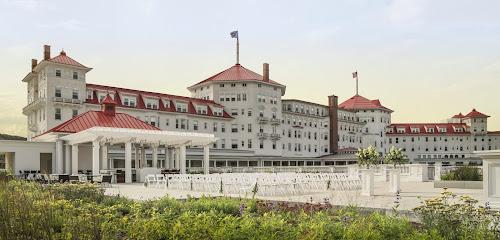
Mt. Washington State Park
Discover the breathtaking landscapes and outdoor adventures at Mt. Washington State Park, New Hampshire's crown jewel for nature lovers.

Mt. Washington State Park
Explore the stunning beauty and thrilling adventures of Mt. Washington State Park, New Hampshire's highest peak and a paradise for nature lovers.

Story Land
Experience the magic of childhood at Story Land, an enchanting amusement park in Glen, NH, perfect for family fun and unforgettable memories.

Clark's Bears
Experience unforgettable family fun and wildlife encounters at Clark's Bears in Lincoln, NH, surrounded by the stunning White Mountains.
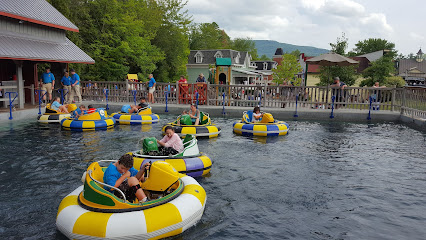
Ice Castles
Experience the magical Ice Castles in North Woodstock, NH, where stunning ice formations and enchanting light displays create a winter wonderland for all ages.

Diana's Baths
Explore Diana's Baths, a stunning natural park in New Hampshire, featuring picturesque waterfalls, serene pools, and scenic hiking trails for all adventurers.

Mt Washington
Explore the breathtaking heights of Mount Washington, where adventure meets stunning natural beauty in New Hampshire's iconic landscape.

Lower Falls
Explore the breathtaking beauty of Lower Falls, a scenic spot in New Hampshire, perfect for hiking, swimming, and enjoying nature's tranquility.

Echo Lake State Park
Experience the natural beauty and tranquility of Echo Lake State Park in North Conway, a perfect escape for outdoor lovers and families.

Granite State Scenic Railway
Embark on a scenic train journey through New Hampshire's stunning landscapes with the Granite State Scenic Railway.
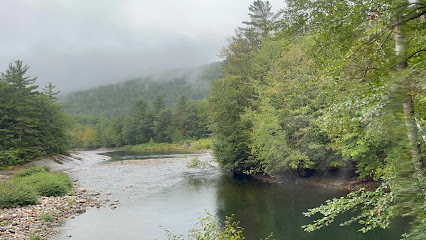
White Mountains Visitor Center
Explore the White Mountains Visitor Center for essential travel tips, maps, and local insights to enhance your adventure in New Hampshire's natural wonder.

Pemigewasset Overlook
Discover the breathtaking views of Pemigewasset Overlook, a scenic gem along Kancamagus Highway, ideal for nature lovers and photographers alike.

Diana's Baths Cascade
Experience the breathtaking waterfalls and serene beauty of Diana's Baths Cascade, a must-visit natural attraction in New Hampshire's White Mountains.

Living Shores Aquarium
Explore the diverse marine life and wildlife at Living Shores Aquarium, a captivating educational experience in the heart of Glen, New Hampshire.

Essential places to dine
Muddy Moose Restaurant & Pub
Experience the heartwarming flavors of America at Muddy Moose Restaurant & Pub in scenic North Conway – where good food meets great company.

Black Mtn. Burger Co.
Discover gourmet burgers made with fresh ingredients at Black Mtn. Burger Co., Lincoln's top destination for burger lovers.

Delaney's Hole In the Wall
Experience delicious grilled delights at Delaney's Hole In the Wall in North Conway, NH - where flavor meets comfort in every bite!
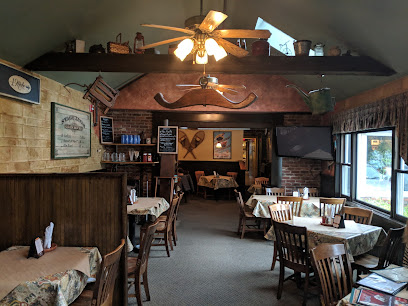
The Common Man Lincoln
Experience authentic American grill cuisine at The Common Man Lincoln in New Hampshire's beautiful White Mountains.

Gordi's Fish & Steak House
Savor fresh seafood and expertly grilled steaks at Gordi's Fish & Steak House in Lincoln - where every meal is a celebration of flavor.

Covered Bridge Farm Table
Discover the flavors of America at Covered Bridge Farm Table in Campton, NH - where delicious food meets live music in a charming setting.

Munroe's Family Restaurant
Discover family-friendly dining at Munroe's Family Restaurant in Twin Mountain—where delicious breakfasts and warm hospitality await you.
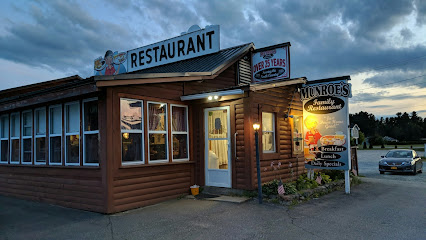
Tuckerman's Restaurant & Tavern
Discover Tuckerman's Restaurant & Tavern: A Family-Friendly Haven Serving Delicious American Cuisine Amidst New Hampshire's Scenic Beauty.

Gypsy Cafe
Experience eclectic cuisine at Gypsy Cafe in Lincoln, NH – where every meal is an adventure bursting with flavor!

The Little Red Schoolhouse, LLC
Experience fresh seafood and homemade ice cream at The Little Red Schoolhouse in Campton, NH - a culinary gem nestled in nature's beauty.

Chef's Bistro
Experience exceptional American cuisine at Chef's Bistro in North Conway – where every meal is crafted with care for families and food lovers alike.
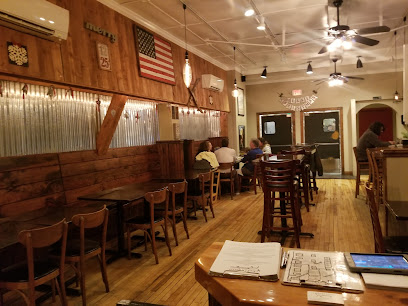
Fabyan's Station
Discover Fabyan's Station in Bretton Woods - where delicious family-friendly dining meets breathtaking mountain views.

Cabin Fever Restaurant
Discover delightful American and seafood cuisine at Cabin Fever Restaurant in Bartlett, NH - perfect for families enjoying the White Mountains.
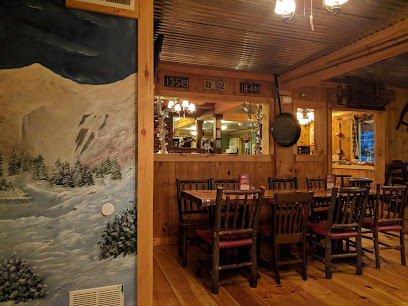
Cafe Lafayette
Experience culinary excellence at Cafe Lafayette in North Woodstock - where local flavors meet rustic charm in a picturesque setting.

La Vista Italian Restaurant
Discover authentic Italian cuisine at La Vista Italian Restaurant in Lincoln - where every meal is a celebration of flavor and tradition.

Markets, malls and hidden boutiques
Zeb's General Store
Discover the charm of Zeb's General Store, where unique gifts, nostalgic candies, and local souvenirs await in North Conway, New Hampshire.

Settlers Green Outlet Village
Shop premium brands at unbeatable prices in the picturesque Settlers Green Outlet Village, your ultimate outlet shopping destination in New Hampshire.

Settlers Crossing
Experience a shopping paradise at Settlers Crossing, featuring diverse shops, delightful dining, and stunning views in North Conway, New Hampshire.

The Christmas Loft
Experience the enchanting charm of The Christmas Loft, a holiday gift shop brimming with festive decor, toys, and seasonal treasures in North Conway.

Grant's Shop 'n Save
Discover the best of local produce and meat at Grant's Shop 'n Save in Glen, NH – a grocery store that feels like home.

Kancamagus Collectables
Explore Kancamagus Collectables in North Woodstock, NH, where unique gifts and local treasures await every traveler.

Headlines Boutique
Explore Headlines Boutique in North Conway - a treasure trove of gifts, clothing, and unique finds in the heart of New Hampshire.

The Depot
Explore a vibrant shopping mall in Lincoln, NH, featuring diverse stores, delightful dining options, and a lively atmosphere perfect for tourists and families.

New Hampshire Country Store
Discover the charm of New Hampshire Country Store, a unique shopping destination filled with local treasures and antique delights.

Sunburst Trading Co
Explore Sunburst Trading Co in Woodstock, NH for unique gifts, clothing, and local treasures that perfectly capture the spirit of New Hampshire.

Mountain Wanderer Book & Maps
Explore the best hiking literature and maps at Mountain Wanderer, Lincoln's go-to bookstore for outdoor enthusiasts and travelers.

RavenWood Curio Shoppe
Explore the charming RavenWood Curio Shoppe for unique gifts and local crafts in the heart of Jackson, New Hampshire's beautiful White Mountains.

The Penguin Gallery
Explore The Penguin Gallery in North Conway for unique gifts, handcrafted jewelry, and a fine selection of wines in a charming setting.

League of NH Craftsmen North Conway Fine Craft Gallery
Explore unique handcrafted treasures at the League of NH Craftsmen North Conway Fine Craft Gallery, a celebration of local artisanship in New Hampshire.
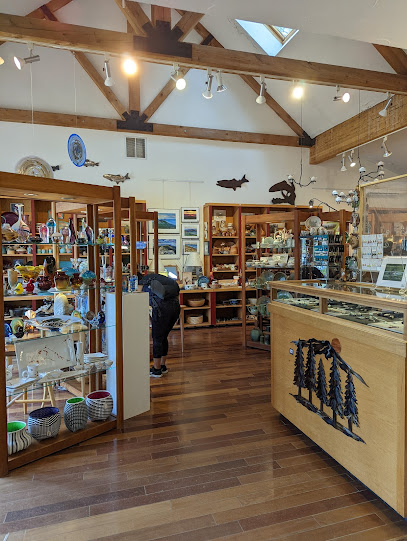
White Mountain Puzzles Store
Discover a world of vibrant jigsaw puzzles and games at White Mountain Puzzles Store in Jackson, NH - a haven for puzzle lovers and families alike.

Essential bars & hidden hideouts
Muddy Moose Restaurant & Pub
Discover the rustic charm of Muddy Moose Restaurant & Pub in North Conway, offering delicious American cuisine and a vibrant pub atmosphere.

Red Fox Bar and Grille
Experience the best of American cuisine at Red Fox Bar and Grille, a family-friendly restaurant in the heart of Jackson, NH.

Moat Mountain Smokehouse & Brewing Co.
Experience the rich flavors of craft beer and smoked delicacies at Moat Mountain Smokehouse & Brewing Co. in scenic North Conway, NH.

Delaney's Hole In the Wall
Discover the flavors of New Hampshire at Delaney's Hole In the Wall, where delicious grill cuisine meets a cozy atmosphere in North Conway.

The Common Man Lincoln
Experience the flavors of New Hampshire at The Common Man Lincoln, where hearty American cuisine meets warm hospitality in a picturesque setting.

May Kelly's Cottage
Discover the heart of Ireland at May Kelly's Cottage, a cozy pub and restaurant in North Conway, serving delicious Irish cuisine and drinks.

Barley & Salt, Tap House and Kitchen
Discover the flavors of American cuisine and craft beer at Barley & Salt, a must-visit brewpub in North Conway, New Hampshire.

Red Parka Steakhouse & Pub
Experience the best of American cuisine at Red Parka Steakhouse & Pub, where delicious steaks and a cozy atmosphere await you.

Tuckerman's Restaurant & Tavern
Discover the charm of Tuckerman's Restaurant & Tavern, where comfort food meets a family-friendly atmosphere in the heart of New Hampshire.
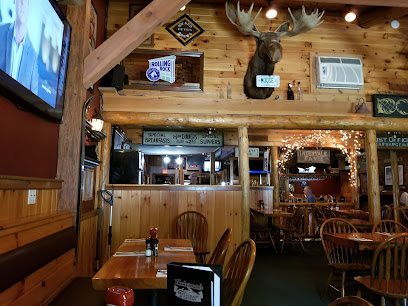
White Mountain Cider Co
Discover the flavors of New Hampshire at White Mountain Cider Co, where American cuisine meets artisanal cider in a stunning mountain setting.

Almost There Restaurant
Experience the heart of American dining at Almost There Restaurant, where comfort food meets local charm in Albany, New Hampshire.

The Shannon Door Pub & Restaurant
Experience authentic Irish culture at The Shannon Door Pub & Restaurant in Jackson, NH, where hearty cuisine meets a lively atmosphere.

One Love Brewery
Experience the best of local brews and hearty cuisine at One Love Brewery in Lincoln, NH, where every sip and bite tells a story.

Pub 32
Discover the culinary treasures of New Hampshire at Pub 32—where gourmet pizzas and gastropub delights await every visitor.

Abenaki Trail Restaurant & Pub
Discover the flavors of New Hampshire at Abenaki Trail Restaurant & Pub, where delicious American cuisine meets a cozy pub atmosphere.

Local Phrases about White Mountains
-
- HelloHowdy
[hao-dee] - GoodbyeSee ya
[see-yah] - YesYep
[yep] - NoNah
[nah] - Please/You're welcomePlease and thank ya
[pleez and thangk yah] - Thank youMuch obliged
[muhch uh-blahy-d] - Excuse me/SorryPardon me
[pahr-dn me] - How are you?How ya doin'?
[hao yuh doo-in] - Fine. And you?Jus' fine. And you?
[juhs fain. And yuh] - Do you speak English?Ya speak English?
[yah speak ing-glish] - I don't understandI ain't got a clue
[ahy aint gaht uh kloo]
- HelloHowdy
-
- I'd like to see the menu, pleaseMind if I take a gander at the menu?
[mahynd if ahy teyk uh gan-duhr at thuh menu?] - I don't eat meatI'm a veggie
[ahym uh vey-jee] - Cheers!Bottoms up!
[bah-tuhmz uhp] - I would like to pay, pleaseI reckon it's time to settle up
[ahy rek-uhn its tahym tuh set-l uhp]
- I'd like to see the menu, pleaseMind if I take a gander at the menu?
-
- Help!SOS!
[es-oh-es] - Go away!Beat it!
[beet it] - Call the Police!Ring the cops!
[ring thuh cahps] - Call a doctor!Get me a sawbones!
[get mee uh saw-bohnz] - I'm lostI'm turned around
[ahym turnd uh-round] - I'm illI'm under the weather
[ahym uhn-der thuh weh-thur]
- Help!SOS!
-
- I'd like to buy...I reckon I'll take...
[ahy rek-uhn ayl teyk] - I'm just lookingJus' browsin'
[juhs brow-zin] - How much is it?What's the damage?
[whahts thuh dam-ij] - That's too expensiveThat's a bit steep
[thats uh biht steep] - Can you lower the price?Any wiggle room on that price?
[eh-nee wig-uhl room awn thaat prahys]
- I'd like to buy...I reckon I'll take...
-
- What time is it?What's the hour?
[whahts thuh aw-er] - It's one o'clockIt's one on the dot
[its wuhn awn thuh daht] - Half past (10)Ten-thirty
[ten-thur-tee] - MorningMornin'
[mawrn-in] - AfternoonAfternoon
[af-ter-noon] - EveningEvenin'
[ee-vuh-nin] - YesterdayYest'day
[yest-dey] - TodayToday
[toh-day] - TomorrowTomorrah
[tuh-maw-ruh] - 1One
[wuhn] - 2Two
[too] - 3Three
[three] - 4Four
[for] - 5Five
[fahyv] - 6Six
[siks] - 7Seven
[sev-uhn] - 8Eight
[eyt] - 9Nine
[nine] - 10Ten
[ten]
- What time is it?What's the hour?
-
- Where's a/the...?Where's the...
[whairs thuh] - What's the address?Where's it to?
[whairs it tuh] - Can you show me (on the map)?Can ya point it out on a map?
[cahn yuh point it aht awn uh map] - When's the next (bus)?When's the next one?
[whens thuh nekst wuhn] - A ticket (to ....)One ticket (to ...)
[wuhn tik-it (tu ...)]
- Where's a/the...?Where's the...
History of White Mountains
-
The White Mountains, part of the northern Appalachian Mountains, were formed over 100 million years ago during the Jurassic period. The range includes the Presidential Range, which contains the highest peaks in the northeastern United States. The mountains are primarily composed of granite and were shaped by glacial activity during the last Ice Age.
-
The White Mountains were originally inhabited by the Abenaki people, part of the larger Wabanaki Confederacy. They referred to the mountains as 'Agiochook,' meaning 'place of the Great Spirit.' The Abenaki utilized the land for hunting, fishing, and gathering, and their deep spiritual connection to the mountains is reflected in their oral traditions and legends.
-
European exploration of the White Mountains began in the early 17th century. The first recorded ascent of Mount Washington, the highest peak in the range, was made by Darby Field in 1642. By the 18th century, European settlers began to establish towns and engage in logging, farming, and milling, which significantly altered the landscape.
-
The White Mountains became a popular tourist destination in the 19th century. The completion of the Portland and Ogdensburg Railroad in 1875 made the region more accessible. Grand hotels such as the Mount Washington Hotel, built in 1902, attracted visitors from across the country. The area was celebrated for its scenic beauty and recreational opportunities, including hiking and skiing.
-
The early 20th century saw significant conservation efforts to preserve the natural beauty of the White Mountains. The Weeks Act of 1911 allowed the federal government to purchase private land for public use, leading to the creation of the White Mountain National Forest. Conservationists such as John Wingate Weeks played crucial roles in advocating for the protection of the region's forests and watersheds.
-
The White Mountains continue to hold cultural and recreational significance. They are home to numerous hiking trails, including a segment of the Appalachian Trail, and are a popular destination for outdoor enthusiasts. The region hosts various cultural events, such as the annual New Hampshire Highland Games, which celebrate Scottish heritage and attract visitors from around the world.
-
Modern infrastructure developments have facilitated access to the White Mountains while balancing environmental preservation. The construction of the Mount Washington Auto Road in 1861 and the Cog Railway in 1869 are notable examples. These transportation innovations allow visitors to experience the summit of Mount Washington, known for its extreme weather conditions and breathtaking views.
White Mountains Essentials
-
The White Mountains are located in New Hampshire, United States. The nearest major airport is Manchester-Boston Regional Airport (MHT), approximately 90 miles away. From the airport, you can rent a car or take a shuttle service. Boston Logan International Airport (BOS) is another option, about 135 miles away. For those preferring public transport, you can take a bus or train to North Conway or Lincoln, which are central towns in the White Mountains area.
-
Renting a car is the most convenient way to explore the White Mountains, given the region's expansive area and the scenic drives. Public transportation options are limited, but there are local bus services and seasonal shuttle buses connecting key towns and hiking trailheads. Taxis and rideshare services like Uber and Lyft are available but may be sparse in more remote areas. Biking is also popular for short distances.
-
The official currency is the United States Dollar (USD). Credit and debit cards are widely accepted in hotels, restaurants, and shops in major towns. However, it's advisable to carry some cash for smaller establishments and rural areas. ATMs are available in most towns, but ensure you have enough cash before heading into more remote areas.
-
The White Mountains are generally safe for tourists. Standard precautions should be taken, such as keeping an eye on personal belongings and avoiding isolated areas at night. While there are no specific high-crime areas targeting tourists, always stay vigilant, especially in crowded places. Be cautious when hiking or engaging in outdoor activities; weather conditions can change rapidly.
-
In case of an emergency, dial 911 for immediate assistance. The region has local police stations and medical facilities in towns like North Conway and Lincoln. It's recommended to have travel insurance that covers medical emergencies and outdoor activities. For minor health issues, pharmacies are available in larger towns.
-
Fashion: Do wear comfortable, weather-appropriate clothing, especially for outdoor activities. Don't wear inappropriate footwear for hiking. Religion: The region is not particularly religious, but do respect any local customs if visiting religious sites. Public Transport: Do be respectful of fellow passengers. Don't expect extensive public transport options. Greetings: Do greet people with a friendly hello or handshake. Eating & Drinking: Do try local cuisine and specialties. Don't litter; keep the natural environment clean.
-
To experience the White Mountains like a local, visit during the fall foliage season for breathtaking views. Engage with locals; they often have valuable insights into the best hiking trails and hidden gems. Don't miss the Cog Railway on Mount Washington for a unique experience. Participate in local events and festivals to immerse yourself in the culture. Visit farmers' markets for fresh, local produce and handmade goods.
Nearby Cities to White Mountains
-
Things To Do in Hanover
-
Things To Do in Montpelier
-
Things To Do in Lewiston
-
Things To Do in Stowe
-
Things To Do in Woodstock
-
Things To Do in Saco
-
Things To Do in Biddeford
-
Things To Do in South Portland
-
Things To Do in Dover
-
Things To Do in Kennebunkport
-
Things To Do in Brunswick
-
Things To Do in Killington
-
Things To Do in Ogunquit
-
Things To Do in Augusta
-
Things To Do in Exeter













